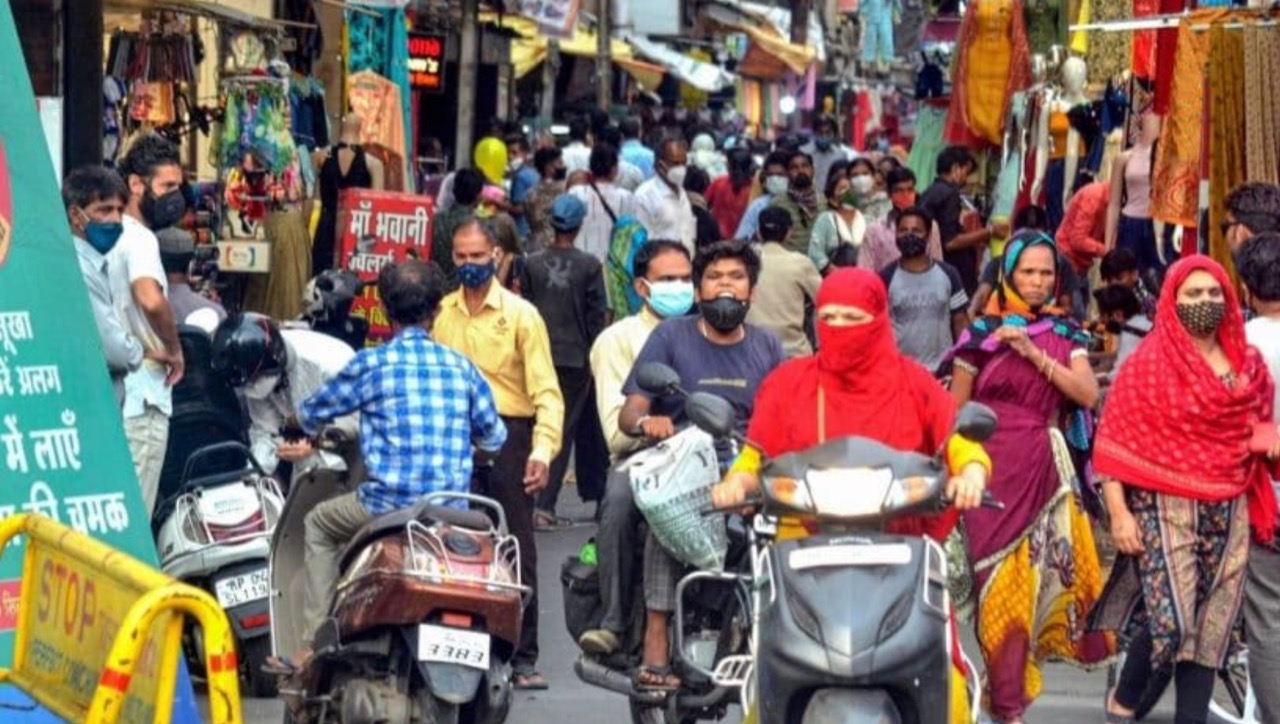


‘India is the youngest country in the world and Uttar Pradesh is the youngest state. With the participation of the youth population, we are in the process of making Uttar Pradesh the best state’ – these words are stated by our Chief Minister Yogi Adityanath.
Nothing could be further from the truth in these words. Uttar Pradesh is the most populous state in the country with an estimate of around 25 crores of people.
The improved growth of Uttar Pradesh represents a positive development for young people across the state. The gross state domestic product grew at a compound annual growth rate of around 8.43 per cent between 2015-16 and 2020-21 to reach Rs 17.06 trillion.
This represents newfound economic opportunities that could be leveraged by the youth, and this could be accelerated by empowering them to secure access to family planning services and take well-informed decisions about spacing and limiting their families. Family planning is an influential element for increased individual, familial, social, and economic well-being.
The success of any family planning programme depends on three factors — access, affordability, and availability of services and commodities; and when we talk about youth, it becomes even more critical to ensure that these are provided without any prejudice and/or stigma.
The recent NFHS-5 survey for Uttar Pradesh reported that 14.4 per cent of currently married women in 15-24 age group are not using contraception but wish to postpone the next birth, which is much higher when compared to the women in the age group 25-49, where the same stands at 3.8 per cent. Without access to family planning services and commodities, young couples and couples with one child are likely to have more multiple and unwanted pregnancies and children.
The FP2030 mentions that it is a fundamental right of individuals (including young people) to decide, freely and for themselves when and how many children to have and it is central to their vision and goals.
Our state’s experience puts the implications of population, health, and nutrition for the young population in context.
NFHS-5 data for the state shows that the women in the age group 20-24 who were married before 18 have declined from 21.1 per cent (NFHS-4) to 15.8 per cent. Similarly, men in the age group 25-29, who were married before 21 years, have declined from 28.7 per cent (NFHS-4) to 23.0 per cent.
Also, women in the age group 15-19 years who were already mothers or pregnant at the time of the survey is 2.9 per cent (NFHS-5) down from 3.8 per cent (NFHS-4).
The adolescent fertility rate for women in the age group 15-19 years reflects a downward trend from 28 in NFHS-4 to 22 in NFHS-4.
The NFHS-5 data reflects that 44 per cent of young women in the age group 15-24 have a mobile phone that they themselves use and 16.8 per cent of women in the same age group are employed in the past 12 months.
The survey data evidently perpetuates a progressive cycle of stable population growth and economic development.
Uttar Pradesh has taken several steps in turning demographic dividend into a huge advantage and public representatives have been key influencers.
Even during the COVID-19 pandemic, we continued to provide family planning services with a focus on young couples. Newer injectable and spacing methods were rolled out, provision of a free kit – Shagun Kit – is being distributed to newlywed couples, the celebration of monthly Khushaal Parivar Diwas, weekly Antara Diwas, rebranding of VHND as Chaya VHND, Saas-Bahu Sammellan as Saas-Beta-Bahu Sammellan, and introduction of a state-level ‘Mr Smart Campaign’ to promote male engagement and address gender dynamics within couples to increase uptake of Family Planning services in the state.
Spousal communication and family planning are closely linked as the husband’s dominance in making family planning decisions gives way to not only joint decision-making but also an increase in women’s decision-making power.
When we address the issues of young couples it becomes crucial to focus on the links between sexual and reproductive health and rights and family planning. Access to affordable family planning services encompasses the area of sexuality and contraception.
There are certain barriers for the young population to access these services such as existing cultural and social norms, gender dynamics, privacy, and confidentiality. Addressing these critical issues, and life skill education in schools, we have ensured the community plays a key role in the uptake of these services and act as facilitating factor.
Uttar Pradesh, with young people constituting around 25 per cent of the total population, shall reap rich dividends due to innovative and community focussed programmes in the areas of sexual and reproductive health and family planning services. These measures will alleviate educational, financial, and social status through effective development initiatives.
Dr Renu Srivastava Verma is the Director General of Department of Health and Family Welfare, Government of Uttar Pradesh.
(Disclaimer: Views expressed above are the author’s own)